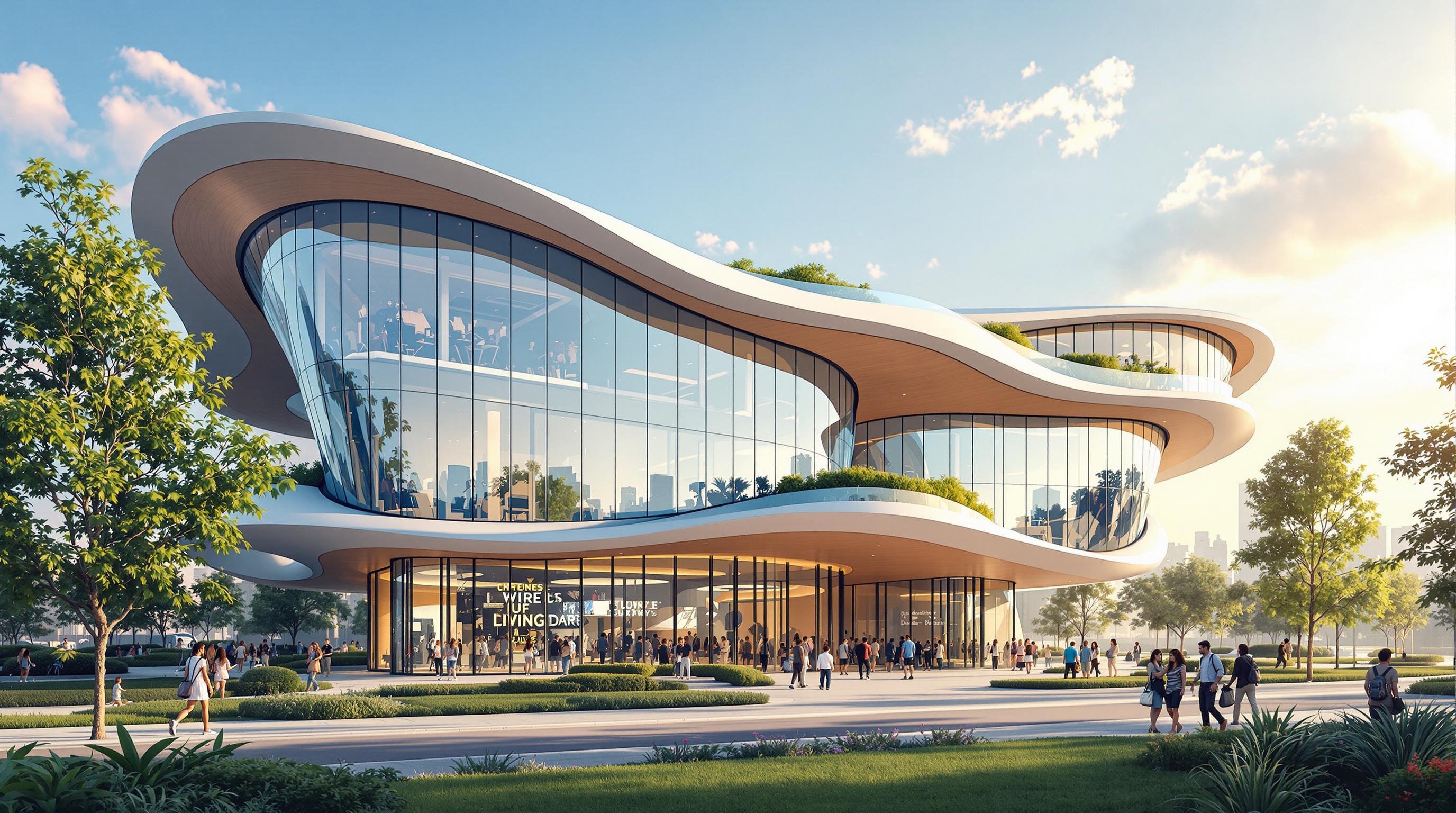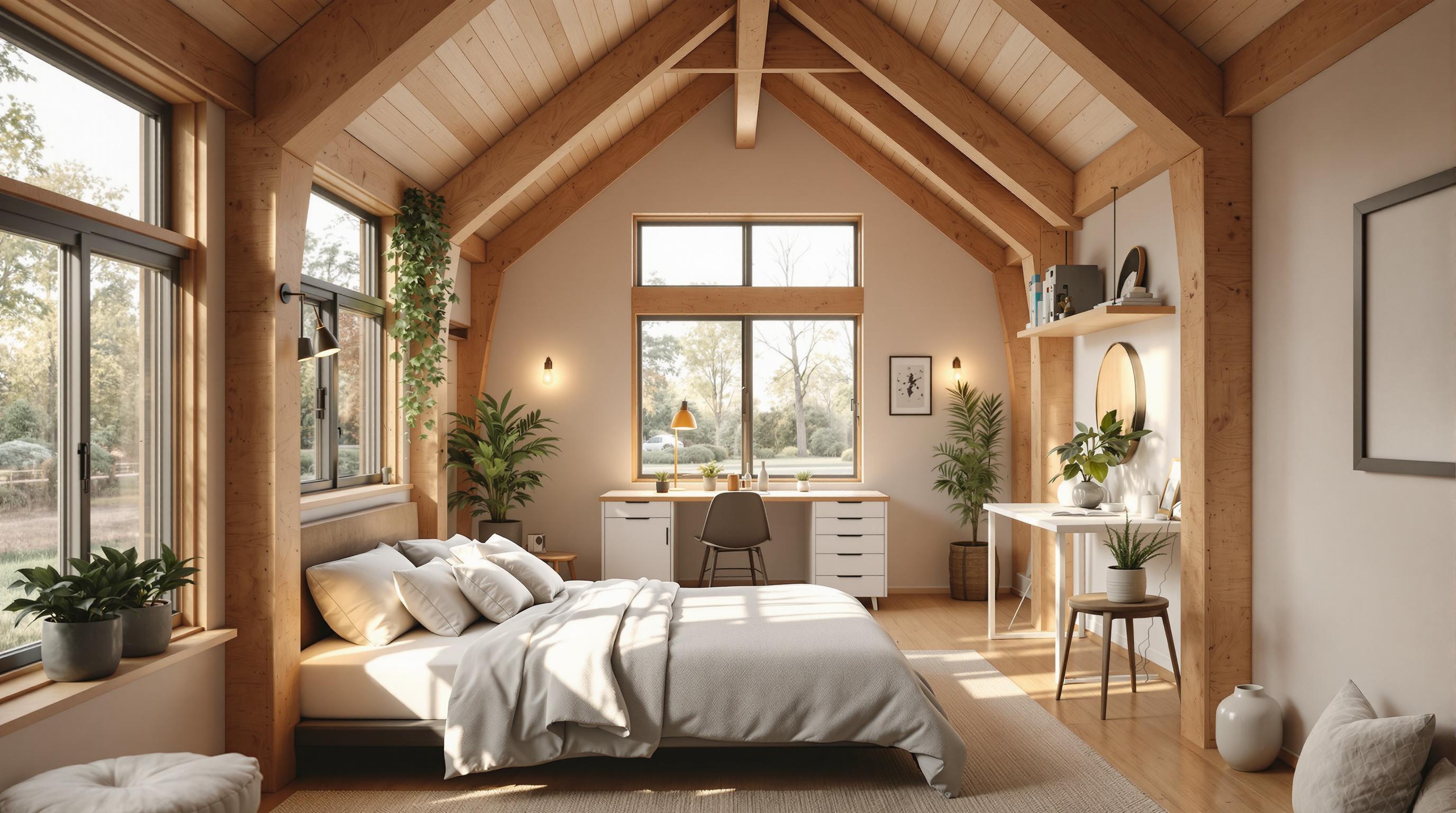Living in a small house in the woods is a growing trend that offers a unique blend of simplicity, sustainability, and connection to nature. Here's what you need to know:
- Energy Efficiency: Tiny homes in forests can cut energy use by 45% compared to traditional houses.
- Cost-Effective: Build your own for as little as $20,000 or pay an average of $35,000 for professional construction.
- Size: Typically range from 100 to 500 square feet, compared to the average 2,600 square foot U.S. home.
- Design Features: Large windows, multi-functional furniture, and natural materials integration.
- Sustainability: Green roofs, eco-friendly building materials, and off-grid systems.
- Styles: Log cabins, timber frame houses, modern glass houses, and rustic-cottage chic designs.
Small woodland homes offer a way to reduce your environmental impact, lower living costs, and embrace a simpler lifestyle without sacrificing comfort or style. They're not just trendy - they're a practical solution for those seeking a more sustainable and nature-connected way of living.
Related video from YouTube
Design Elements
When building a small house in the woods, certain design choices can make your space both beautiful and practical. Let's look at three key elements:
Large Windows for Natural Light
Big windows are a must in a forest setting. They let in tons of light and make you feel like you're part of the woods, even when you're inside. Take the "Glass Paradise in Sweden" - it's a perfect example of how big windows can make the line between inside and outside almost disappear.
These windows do more than just look good. They can cut down on your need for electric lights during the day by about 30%. That's good for your energy bill and the environment.
Multi-Functional Furniture
In a small house, you need to make every inch count. That's where multi-functional furniture comes in handy. Think beds that fold into the wall, tables that work for both eating and working, or footstools with hidden storage.
The FORÊT 1 House in Montreal shows how this can work. They used built-in furniture to save space and keep things looking sleek. This smart approach can cut down on the amount of furniture you need by up to 40%, giving you more room to move around.
Natural Materials Integration
Using materials like wood and stone helps your house fit in with the forest around it. It looks good and it's better for the environment too.
Check out the Circular Forest House in Poland. They used a lot of Okume wood, which makes the house feel warm and cozy. Plus, using local, sustainable materials can cut down on the carbon footprint of building by up to 25% compared to regular methods.
"There is a dire need for an ecological architecture that minimizes its impact on nature and also blends into nature seamlessly." - Source Author
These design elements can help you create a house that's not just a place to live, but a part of the forest itself.
sbb-itb-1be9014
2. Sustainability Features
Living in a small house in the woods isn't just about embracing nature - it's about protecting it too. Let's look at three key sustainability features that can make your woodland home eco-friendly and efficient:
Green Roofs: Nature's Blanket
Picture a roof that's alive and breathing. That's a green roof. These living roofs, covered with plants, act as natural insulators for your home. They're not just pretty - they're practical.
Green roofs can slash your summer cooling needs by 70-90%. Talk about an energy saver! They're also great at managing rainwater, holding onto 70-90% of rainfall in summer and 24-40% in winter. This helps prevent flooding and keeps your local ecosystem in balance.
"The energy efficiency factor of green roofs also reduces demand for power, thereby decreasing the amount of CO2 being released into the atmosphere." - Green Roof Technology
It's a win-win for you and the planet.
Eco-Friendly Building Materials: Back to Basics
When building your woodland home, your choice of materials matters. Natural and recycled materials can boost your home's eco-efficiency and even cut your bills.
Take cob, for instance. It's a mix of subsoil, water, and organic material that's been used for centuries. Cob houses are so energy-efficient that some need little to no heating. Plus, they cost about one-tenth of traditional builds.
Recycled steel is another option. It's the most recycled material globally and keeps its strength through the recycling process. Using it in your build can significantly cut energy costs.
"Using green materials in your home design can help you reduce your carbon footprint, improve your health and wellness – and even up your overall happiness." - Susan Meyer, Senior Editorial Manager
Off-Grid Systems: Power Independence
Going off-grid isn't just for survivalists anymore. It's a practical way to reduce your environmental impact and become self-reliant. The key? Harnessing renewable energy sources like solar and wind power.
For example, the Anker SOLIX C1000 Solar Generator paired with a 200W Solar Panel can output 1800W of power. That's enough to run a mini fridge for 33 hours! It's a great way to power your small house without relying on the grid.
But off-grid living isn't just about power. It's also about water and waste management. Rainwater collection systems can meet your water needs, while composting toilets can turn waste into garden fertilizer.
"You can minimize your energy consumption by choosing energy-efficient appliances, such as LED lights, low-flow faucets, or propane stoves." - Steve Barnes, The Off Grid Cabin
3. Architectural Styles
Small houses in the woods come in various styles. Each offers its own charm and function, helping you create the perfect woodland retreat. Let's look at four popular styles for forest homes:
1. Log Cabin
Log cabins are classic woodland homes. They're cozy, rustic, and hard to beat. These homes use horizontally stacked logs with hand-cut grooves for a snug fit. The full scribe technique, from Scandinavia, keeps the weather out and the warmth in. Log cabins connect you to nature and can handle tough weather, making them great for living year-round or as vacation spots.
2. Timber Frame
Timber frame houses show off beautiful wooden beams and joints. They allow for big, open spaces inside without needing walls to hold up the roof. Bonnie Pickartz from Goshen Timber Frames says:
"A timber frame can be uniquely weathertight thanks to enclosure systems (like structural insulated panels, or SIPs) that wrap the frame in an envelope of insulation."
This mix of old-school craftsmanship and new-school efficiency makes timber frame homes both pretty and practical.
3. Modern Glass House
Want something more current? Modern glass houses blend right into the forest. They have clean lines, simple designs, and big glass walls that make you feel like you're outside even when you're in. All those windows don't just look good - they can cut your need for lights by up to 30% during the day, saving energy.
4. Rustic-Cottage Chic
This style mixes rustic charm with cottage comfort. Designer Ally Whalen calls it a blend of "rustic cottage style furniture with soft fabrics and natural elements." To get this look, use wooden furniture and natural textures, but balance them with soft fabrics and fancy touches. Whalen suggests:
"Don't panel the walls with wood - you need to mix it with soft accessories like draperies, pillows and upholstered pieces."
When picking a style for your small forest house, think about how it fits with the trees and your lifestyle. Whether you go for an old-school log cabin or a sleek glass house, each style can turn your woodland getaway into a real home away from home.
Conclusion
Living in a small house in the woods isn't just about escaping city life. It's a lifestyle that promotes well-being, shrinks your ecological footprint, and deepens your connection with nature.
These cozy woodland retreats pack a punch when it comes to energy efficiency. Take log cabins, for example. They can slash energy needs by up to 30% compared to regular houses. That means lower bills and a smaller carbon footprint. As ELoghomes puts it:
"You can feel good knowing that owning a log cabin home helps reduce global carbon dioxide emissions compared to traditional brick and stick-built homes."
But it's not just about saving energy. Many of these homes use renewable materials like wood, which soaks up CO2 as it grows. It's a win-win for you and the planet.
Living in the forest isn't just good for the Earth - it's good for you too. The natural setting can boost your immune system and help you sleep better. Plus, it's hard to beat the stress-busting power of a tranquil woodland backdrop.
Worried about giving up modern comforts? Don't be. Today's small forest houses are clever. They use multi-functional furniture and off-grid systems to keep you comfy without the waste.
And let's talk money. Tiny homes, often part of this forest-living trend, can cost way less than traditional houses. That could mean living debt-free and focusing on experiences instead of stuff.
But remember, forest living comes with responsibilities. You'll need to take care of your home and respect the ecosystem around you. Regular check-ups, protective finishes for log homes, and eco-friendly practices like collecting rainwater are all part of the deal.
Looking ahead, small houses in the woods are set to become even more popular. With urban housing shortages and a growing hunger for sustainable living, these forest retreats offer a real alternative.


